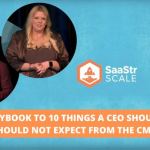- Like
- SHARE
- Digg
- Del
- Tumblr
- VKontakte
- Flattr
- Buffer
- Love This
- Save
- Odnoklassniki
- Meneame
- Blogger
- Amazon
- Yahoo Mail
- Gmail
- AOL
- Newsvine
- HackerNews
- Evernote
- MySpace
- Mail.ru
- Viadeo
- Line
- Comments
- Yummly
- SMS
- Viber
- Telegram
- JOIN
- Skype
- Facebook Messenger
- Kakao
- LiveJournal
- Yammer
- Edgar
- Fintel
- Mix
- Instapaper
- Copy Link
These days data runs the world—and it seems we can never have too much of it. But when we’re bombarded with data we need a way to arrange it so that we can properly understand how that data is working for or against us and what conclusions we can find as a result.
Data organization is a priority for any individual or company, at least it should be. You need to centralize, organize, and analyze your data on a consistent basis in order to keep up to date on your everyday life. When you have everything you need in a centralized modern data platform it simplifies your entire life and can save hours of time trying to process what all of that data means.
Data organizational tools work through a process—extract, centralize, organize, and analyze. From here, the tools are meant to deliver you the proper information so you can take the next steps moving forward—whether that’s how to handle employees, manufacturing goals, identifying industry trends, how to communicate more efficiently with your customers, ways to attract new clients, observe a dip in finances in the past and how to correct that for the future. The list of actionable items from the information you will receive from data organization is endless, and that’s precisely why it is so imperative to your workplace.
When you have trouble analyzing and comparing data organization tools, here are a few things to keep in mind.
Calculate the setup time
As you analyze and compare data organization tools, keep in mind how long it will take you to setup each time. You will inevitably accumulate more data as the days continue on and all of that needs to be organized into a centralized place each time. Sadly, data organization is not a one-and-done process but rather a predictable scheduled need. So when you’re comparing which tools to use to make your life easier ask yourself how much time it will take to complete. If it’s hours on end to process then it really isn’t making your life easier, but rather being more time-consuming.
Weigh the actual cost
Certain data organization tools are unnecessarily expensive, while others prove their worth pretty quickly. As you weigh your options, also weigh the actual cost of what you’ll be using. Read reviews on how they perform and determine if the quality matches what they are charging you. Many people are quick to point out that self-data organization is easier and cheaper. While, yes, it might be cheaper it might also end up costing you more time which in fact makes it more complicated. Don’t assume that the most expensive ones are the best, just like you shouldn’t assume the least expensive is the worst. After some research, determine the price for your budget that you’re willing to spend and what you will actually gain from it.
Learn about the warehouse
Data organization tools use a centralized warehouse to store all of your data. It’s a simplified, single destination where everything you need resides, making it easier than ever to access your data in a few simple steps and cut down on query times. But not all warehouses work the same, and you aren’t guaranteed to like certain ones. You might gravitate to a certain warehouse system over another, or you might already have an existing account with a warehouse. The warehouse provides a simple interface for data sources, it will transform it, and create a snapshot. No matter the case, learn what warehouse the data system uses and play around with your knowledge and comfortably of that warehouse.
How accurate is the feedback
Your data organization tool should provide you with reliable feedback from your data so that you can start to create actionable items based on what’s being fed to you. The feedback is most important because it’s from here that you will test what needs to be solved for now and in the future. How can you predict what a client or future customer needs without being able to identify trends and solutions for the future? Beyond just the feedback itself is how the feedback is being delivered. You want it to be done in a way that’s digestible to you—whether that’s numbers, graphs, or sentences. You want the analysis to be communicated to you in a way you will understand it—predictive analysis, text analysis, statistical analysis, or diagnostic analysis.
Above anything, the data organization tool you use should feel comfortable for you. On both a physical level and emotional level. You want to be able to navigate your data seamlessly and without stress. Because choosing the wrong data organization tool can quickly make your life a lot harder, and work a lot less navigational.




